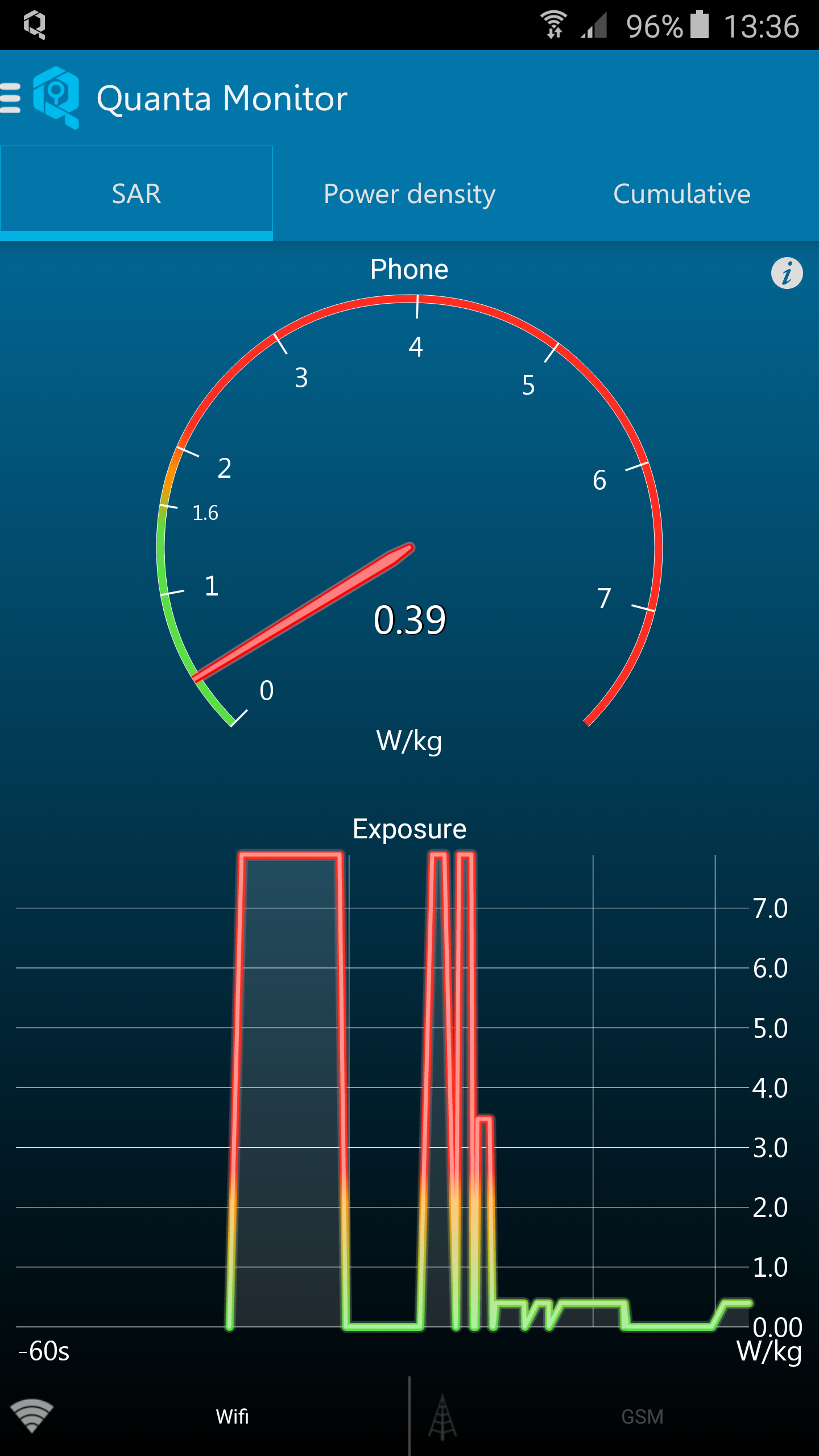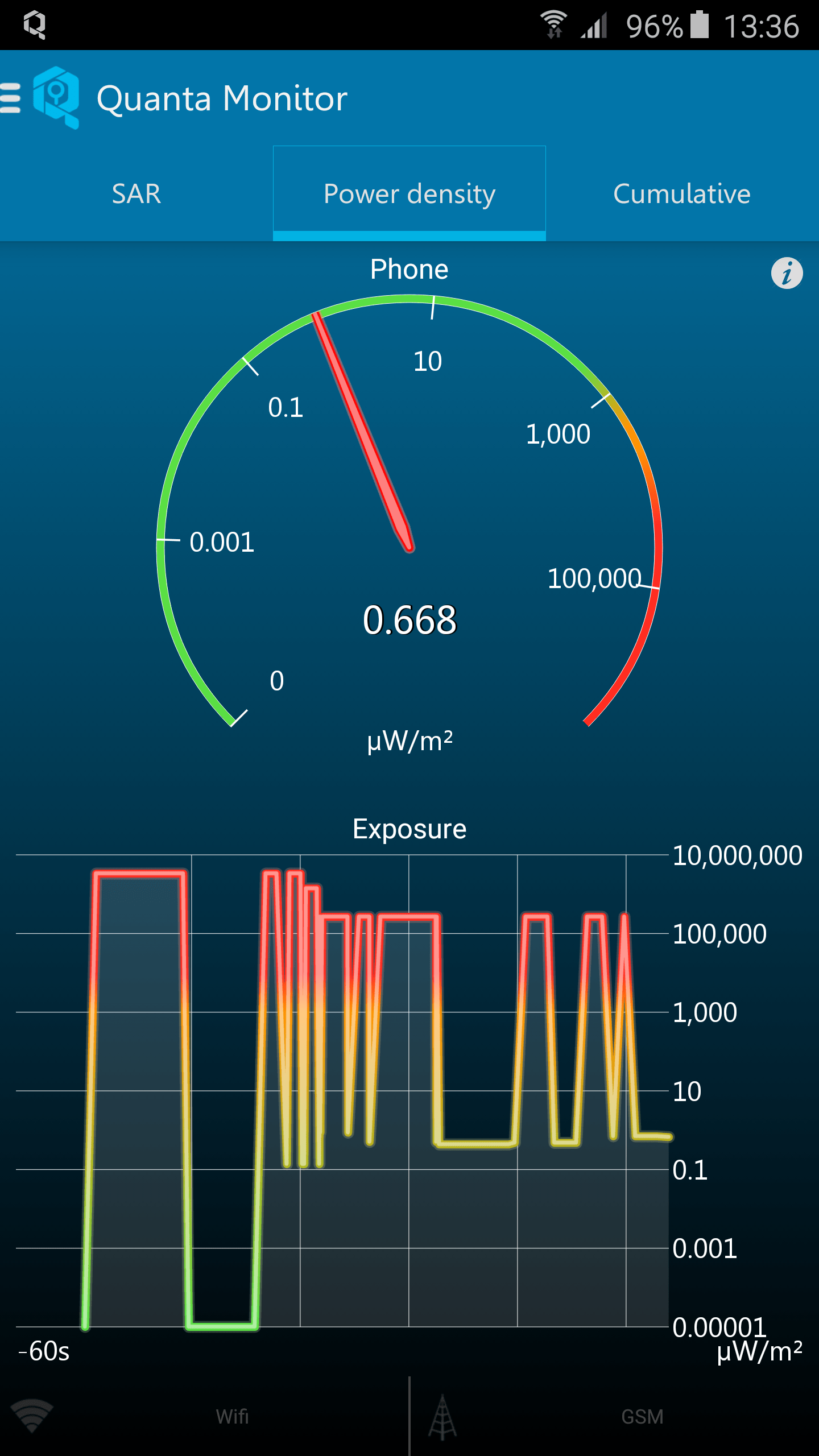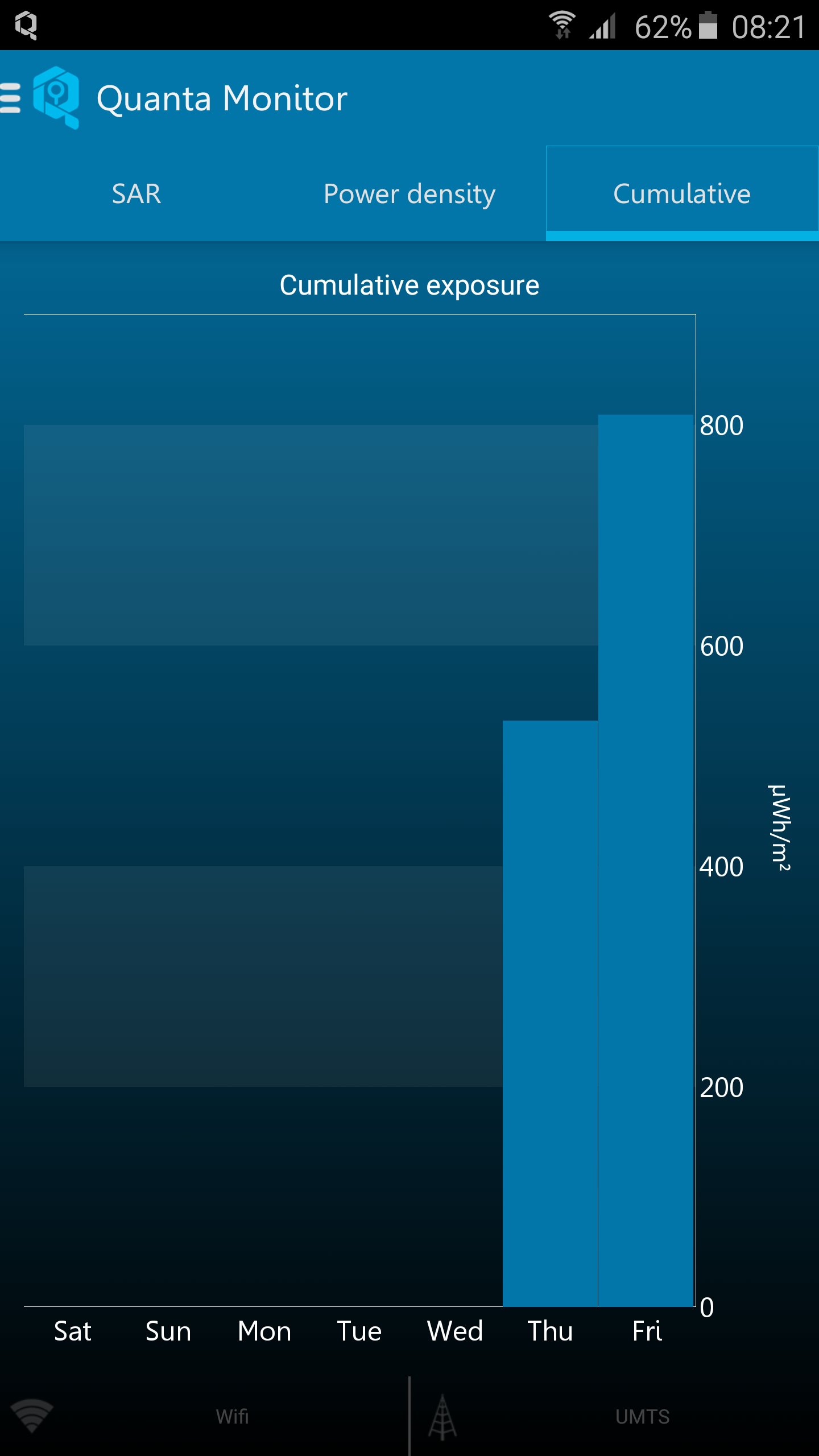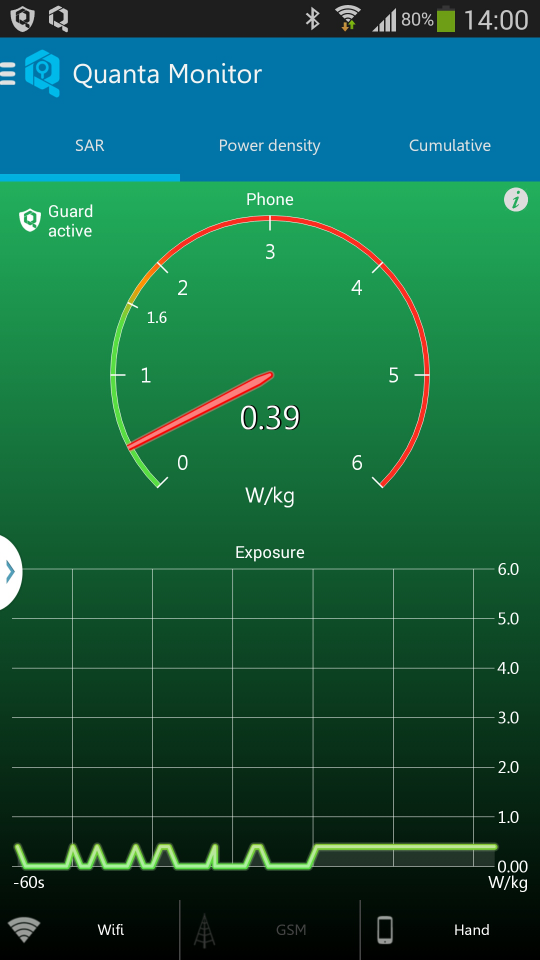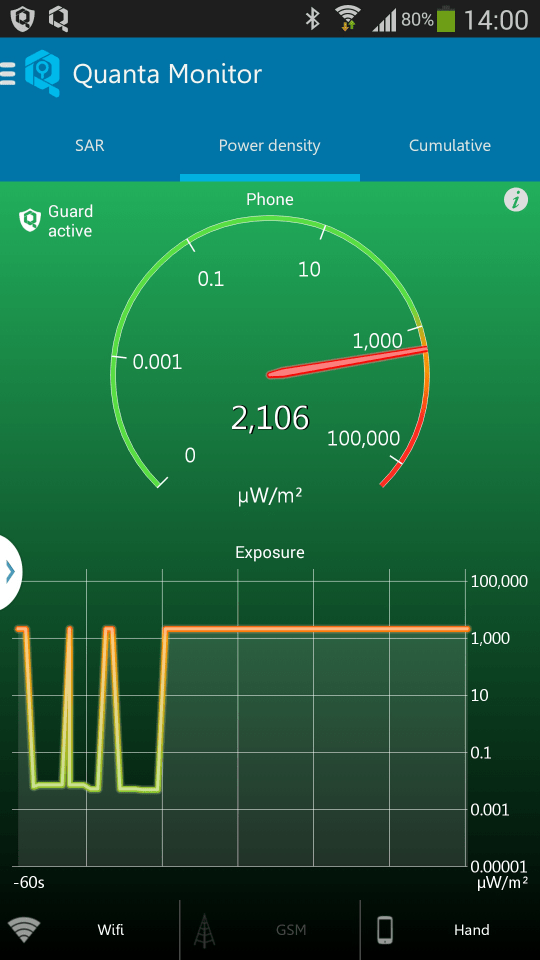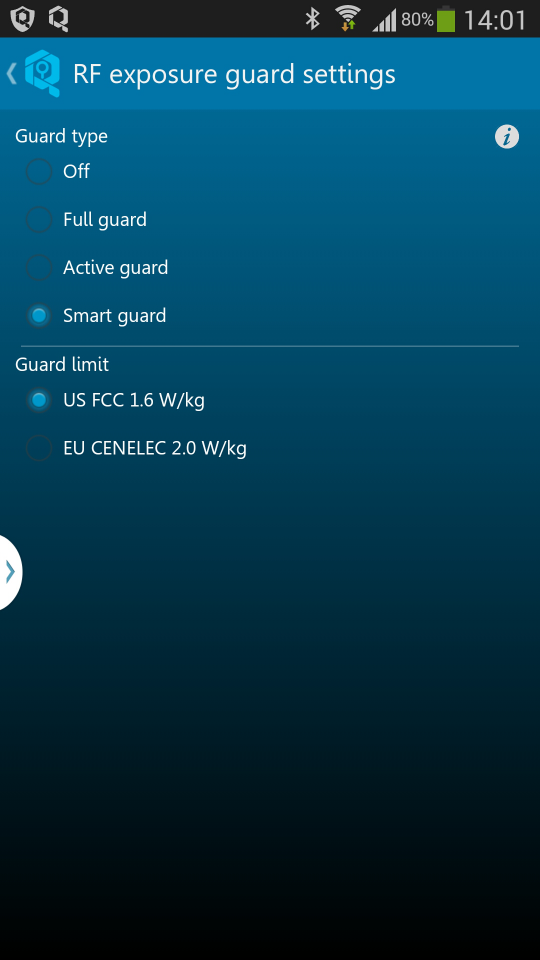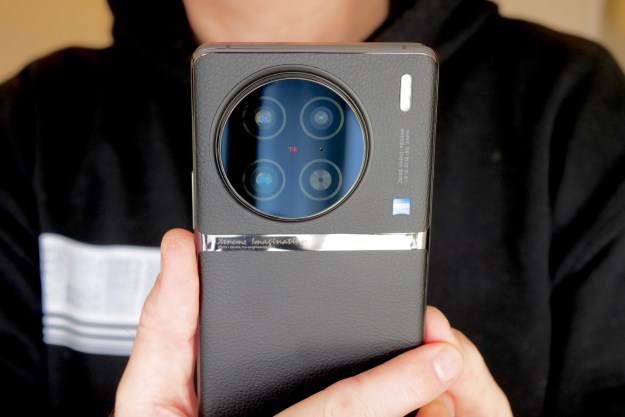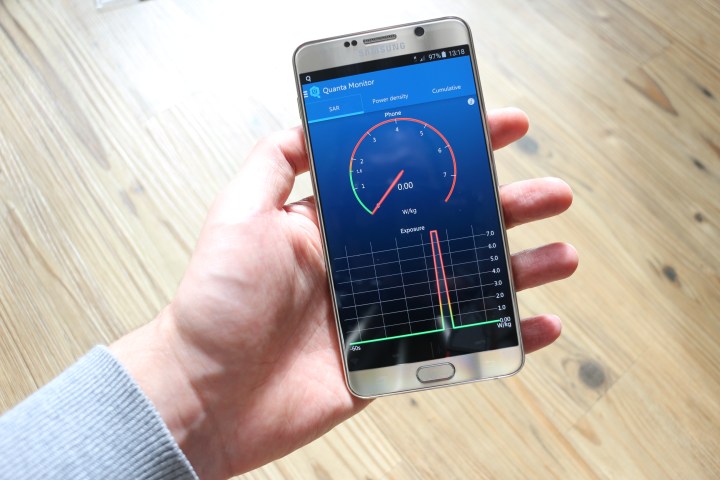
Quanta Monitor is a free Android app that measures the SAR (Specific Absorption Rate) output, power density, and cumulative exposure to radiofrequency emissions from your phone. Quanta Guard takes things a step further by automatically cutting off your data connection if safe SAR limits are exceeded. We tried both apps out to see how they work and learn just how much radiation we’re exposed to on a daily basis.
Is cell radiation dangerous?
There’s still a great deal of controversy about how dangerous cell phone radiation really is. The last time the World Health Organization’s International Agency for Research on Cancer reviewed the available evidence on radiofrequency electromagnetic fields it classified them as “possibly carcinogenic to humans.”
That was in 2011, and new evidence is emerging all the time. There’s a growing movement that’s convinced of the cancer risk and actively campaigning for a new assessment, but it’s a difficult topic to pick through. People on both sides of the debate can sound hyperbolic. At the extremes, it’s compared to smoking on the one side, but then it’s presented as completely harmless on the other. The truth probably lies somewhere in between. If you’re interested in the subject, you can read our full interview with an expert on the effects of cell radiation.
What’s lacking for most consumers is accurate information on exposure. The FCC has set a limit for public exposure from cell phones as a SAR level of 1.6 watts per kilogram.
“There are legal SAR limits, like the U.S. limit of 1.6w/kg, but no one is making sure that these levels are not exceeded when the phone is next to your skin or in your pocket,” explained Pasi Ala-Mieto, COO of Cellraid.
Cellraid’s apps track radiation levels
The Quanta Guard app is designed so that it automatically cuts your data connection if the SAR level of 1.6w/kg is exceeded. It actually has a few different guard modes, so you can also set it up to cut the data connection when the SAR level is exceeded and the phone is in your pocket, next to your ear, or in your hand, but not when it has been left on the table.
Cellraid was founded by experienced mobile phone industry veterans, including COO, Pasi Ala-Mieto, who worked at Nokia, then the wider telecom industry, for two decades. The company also offers the Quanta Pro app which, is aimed at operators and telecom authorities to measure the total level of RF exposure from the phone, the network, Wi-Fi, and other sources.
“Most telecom authorities and operators only measure downlink (antennas),” explains Ala-Mieto. “Which is not significant for the consumer at all. As you will see, the main source is the phone itself, not antennas.”
Currently, the Quanta Guard app only works with Android phones up to version 4.4, more recent
You can still use Quanta Guard to get an idea of what levels your device is operating at. The accuracy of the readings also depends to some extent on the phone manufacturer, but Ala-Mieto claims the margin of error is less than 1.0 SAR for 95 percent of the phones out there, and falls to 0.5 SAR for the 40 percent that offer more accurate reporting.
Can this app protect you from your phone?
I tried the Quanta Monitor app out with my Samsung Galaxy Note 5, and the results were erratic. While connected to Wi-Fi, the SAR levels stayed firmly in the green, but as soon as I turned Wi-Fi off and switched to the mobile data connection, every few seconds the SAR meter would jump into the red, reporting a reading anywhere from 3.0 w/kg up to 6w/kg. I found the same results with my wife’s Sony Xperia Z1 Compact.
“Power density and SAR levels jump every now and then,” says Ala-Mieto. “They depend on how good coverage you have, or how congested the network is. Also, the SAR level jumps when sending or receiving information, and depending on how close the phone is your body. There are operators that push users onto poor quality 4G networks with very high SAR levels, even when there are better 3G networks with low SAR levels available.”
We do live in an area with patchy reception. Whether these jumps are actually going to cause harm is difficult to say. If it’s on the table or in my hand, then perhaps there’s nothing to worry about, but what if it’s in my pocket or pressed up to my ear? More than double the FCC limit certainly seems like cause for concern.
The Cellraid apps are designed to run in the background, constantly monitoring your phone, but it’s also worth noting that Quanta Monitor had a significant impact on battery life, when I tried it. In theory, Quanta Guard will actually extend your battery life, because it reduces exposure by cutting the data connection when the limit is exceeded. It could also liberate network resources, potentially improving the connection quality for more customers by limiting traffic. If it only cuts out when the phone is your pocket, there shouldn’t be a major impact on usability.
“Hopefully, regulators will take action and realize that smartphone usage has changed considerably since 1996, when the existing regulations were established and people just used their phones for calls,” says Ala-Mieto. “20 year-old RF exposure regulations don’t account for the data-hungry way we use smartphones today, when even schoolkids have phones in their pockets 24/7. This is a sensitive topic for the industry, but I strongly believe that the first operators and phone manufacturers to take action will benefit greatly; customers understand the value of being on the safe side.”
If you want to test your own phone, then you can try out Quanta Monitor for free, but Quanta Guard will cost you $4.29.
Editors' Recommendations
- The best iPhone and Android apps for Black History Month 2024
- This app put iMessage on my Android phone — and it blew me away
- We’ve never seen a phone with a screen like this before
- It’s 50 years to the day since the first cell phone call
- Our 5 favorite iPhone and Android apps by Black developers
